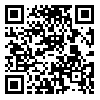Volume 5, Issue 1 And 2 (1-2017)
JoMMID 2017, 5(1 And 2): 38-39 |
Back to browse issues page
Download citation:
BibTeX | RIS | EndNote | Medlars | ProCite | Reference Manager | RefWorks
Send citation to:



BibTeX | RIS | EndNote | Medlars | ProCite | Reference Manager | RefWorks
Send citation to:
Keikha M. Why Is The Identification of Causative Agent of Nocardiosis Essential at The Species Level?. JoMMID 2017; 5 (1 and 2) :38-39
URL: http://jommid.pasteur.ac.ir/article-1-139-en.html
URL: http://jommid.pasteur.ac.ir/article-1-139-en.html
Department of Microbiology, School of Medicine, Isfahan Medical University, Isfahan, Iran
Abstract: (6298 Views)
[No Abstract]
Nocardia is a genus of weakly gram-positive, filamentous, aerobic, relatively slow-growing and partially acid-fast bacteria. These bacteria are ubiquities in environmental resources such as water, soil, dust, decomposing animal feces, and vegetables. This group of bacteria can enter the human body through inhalation and traumatic cutaneous inoculation and cause Nocardia infections. There are various types of nocardiosis including pulmonary, brain, cutaneous, cutaneous-lymphatic, and ocular infections. These infections often occur in immunocompromised patients including organ transplant recipients, corticosteroid drugs consumers, human immunodeficiency virus (HIV) patients, cancerous and even healthy individuals.
Nocardia is a genus of weakly gram-positive, filamentous, aerobic, relatively slow-growing and partially acid-fast bacteria. These bacteria are ubiquities in environmental resources such as water, soil, dust, decomposing animal feces, and vegetables. This group of bacteria can enter the human body through inhalation and traumatic cutaneous inoculation and cause Nocardia infections. There are various types of nocardiosis including pulmonary, brain, cutaneous, cutaneous-lymphatic, and ocular infections. These infections often occur in immunocompromised patients including organ transplant recipients, corticosteroid drugs consumers, human immunodeficiency virus (HIV) patients, cancerous and even healthy individuals.
Type of Study: Letter to the Editor |
Subject:
Infectious diseases and public health
Received: 2017/09/2 | Accepted: 2017/10/25 | Published: 2017/12/13
Received: 2017/09/2 | Accepted: 2017/10/25 | Published: 2017/12/13
References
1. Brown-Elliott BA, Brown JM, Conville PS, Wallace RJ. Clinical and laboratory features of the Nocardia spp. based on current molecular taxonomy. Clin Microbiol Rev. 2006; 19 (2): 259-82. [DOI:10.1128/CMR.19.2.259-282.2006] [PMID] [PMCID]
2. Menkü A, Kurtsoy A, Tucer B, Yıldız O, Akdemir H. Nocardia brain abscess mimicking brain tumour in immunocompetent patients: report of two cases and review of the literature. Acta Neurochir (Wien). 2004; 146 (4): 411-14. [DOI:10.1007/s00701-004-0215-6] [PMID]
3. Rahdar HA, Azadi D, Shojaei H, Daei-Naser A. Molecular analysis and species diversity of Nocardia in the hospital environment in a developing country, a potential health hazard. J Med Microbiol. 2017; 66 (3): 334-41. [DOI:10.1099/jmm.0.000436] [PMID]
4. Bafghi MF, Heidarieh P, Habibnia S, Rasouli-Nasab M, Kalantar Neyestanaki D, Afshar D, et al. Phenotypic and molecular properties of the Nocardia species. Avicenna J Clin Microb Infect. 2014; 1 (1): e19215.
5. Rudramurthy SM, Honnavar P, Kaur H, Samanta P, Ray P, Ghosh A, et al. Molecular identification of clinical Nocardia isolates from India. J Med Microbiol. 2015; 64 (10): 1216-25. [DOI:10.1099/jmm.0.000143] [PMID]
6. Welsh O, Vera-Cabrera L, Salinas-Carmona MC. Current treatment for Nocardia infections. Expert Opin Pharmacother. 2013; 14 (17): 2387-98. [DOI:10.1517/14656566.2013.842553] [PMID]
7. Taj-Aldeen SJ, Deshmukh A, Doiphode S, Abdul Wahab A, Allangawi M, AlMuzrkchi A, et al. Molecular identification and susceptibility pattern of clinical Nocardia species: Emergence of Nocardia crassostreae as an agent of invasive nocardiosis. Can J Infect Dis Med Microbiol. 2013; 24 (2): 33-8. [DOI:10.1155/2013/256025]
8. Wallace RJ, Steele LC. Susceptibility testing of Nocardia species for the clinical laboratory. Diagn Microbiol Infect Dis. 1988; 9 (3): 155-66. [DOI:10.1016/0732-8893(88)90025-9]
9. McTaggart LR, Doucet J, Witkowska M, Richardson SE. Antimicrobial susceptibility among clinical Nocardia species identified by multilocus sequence analysis. Antimicrob Agents Chemother. 2015; 59 (1): 269-75. [DOI:10.1128/AAC.02770-14] [PMID] [PMCID]
10. Schlaberg R, Fisher MA, Hanson KE. Susceptibility profiles of Nocardia isolates based on current taxonomy. Antimicrob Agents Chemother. 2014; 58 (2): 795-800. [DOI:10.1128/AAC.01531-13] [PMID] [PMCID]
Send email to the article author
| Rights and permissions | |
 |
This work is licensed under a Creative Commons Attribution-NonCommercial 4.0 International License. |

This work is licensed under a Creative Commons Attribution-NonCommercial-NoDerivatives 4.0 International License.





